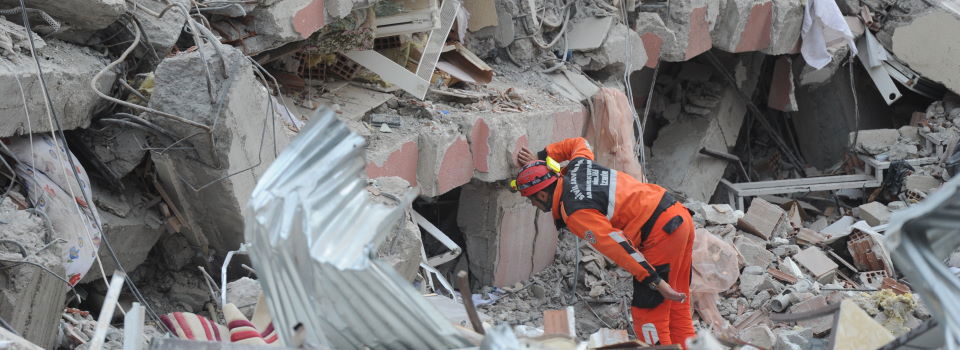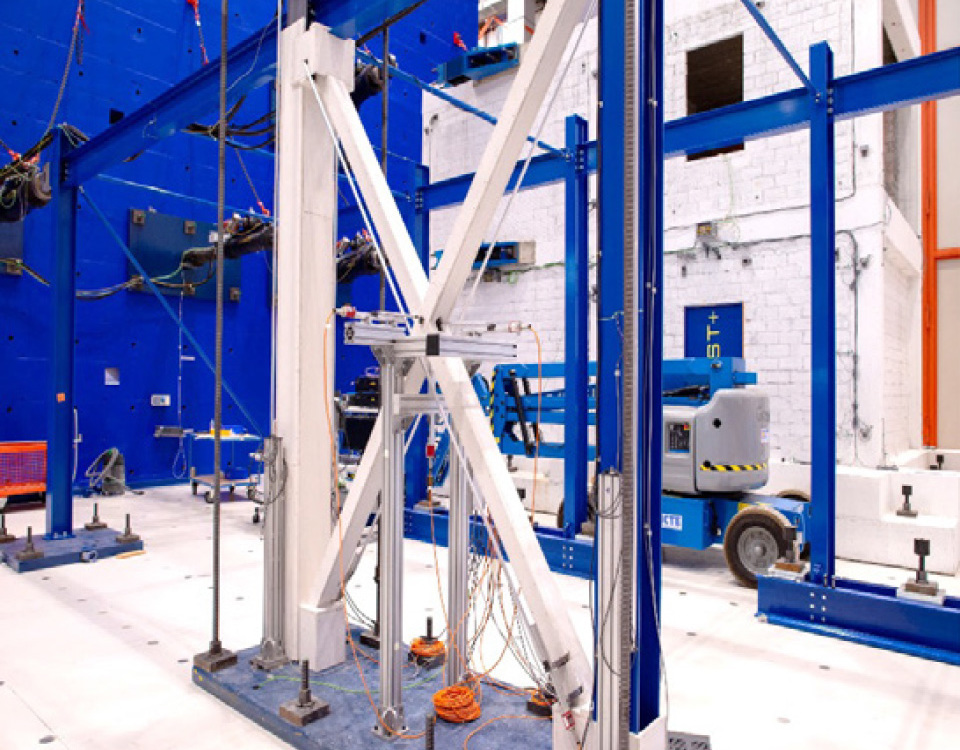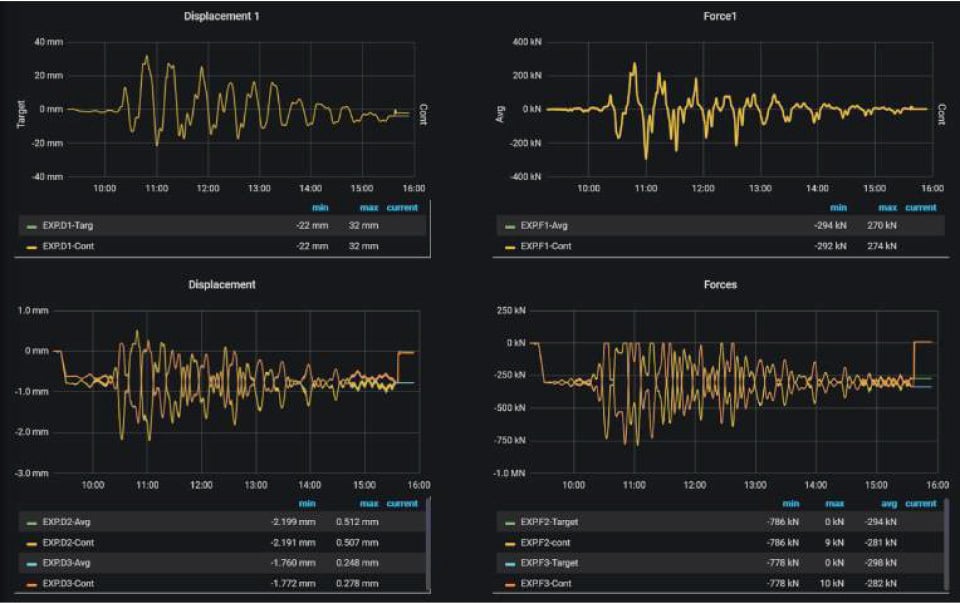
What has fire got to do with an earthquake?
Earthquakes are a real threat to a large part of our planet. They come unexpectedly, their causes are many and unpredictable. When an earthquake hits a town or a region, it often causes terrible damage and loss of life. Unfortunately, this is usually not the whole extent of the calamity. Many historical events (e.g. the 1906 San Francisco, 1923 Tokyo, 1995 Kobe, 1999 Turkey, 2011 Tohoku, and 2011 Christchurch earthquakes) have shown that earthquake-induced rupture of gas piping and/or failure of electrical systems can trigger another calamity - a fire following earthquake (also known as FFE).
Earthquake, only a first in a range of disasters
It is generally believed that earthquakes are just trembles of the earth, but that is simply not correct. Actually, most death after an earthquake happens not by falling over or being slammed against objects as usually depicted in movies, but by other reasons - secondary effects of earthquakes.
For example, most earthquakes produce surges in water because of their sea-level effects. The fine silt particles within the rock can be liquefied by the quake and cause waves, hazardous flooding, and tsunami. And that's not nearly all.
Earthquakes often cause landslides and avalanches, which can also spark fires in their turn. They are also correlated with the release of flammable gases, the elevated levels of which can result in fires or explosions. If you live near a fault line that might happen in the future. If it does, evacuate from your home and peek through your window to see the direction of the winds surrounding you. Stay with your family and animals if possible, or evacuate to a facility dedicated to civilians.
Fire following earthquake
Fire following earthquake is thus just one among the many effects of the latter. However, the fires, regardless of their provenience, can weaken the load-bearing steel structure of a building already damaged by seismic actions. Therefore, it is crucial that the fire protection systems continue to protect the building from fire, even after a strong earthquake.
Why does structural fire performance deteriorate after a fire?
The structural fire performance can deteriorate because the fire acts on a previously damaged structure. In addition, the earthquake may have damaged fire protection elements, and the fire can spread more rapidly if compartmentation walls have failed. This is particularly relevant for steel structures as the high thermal conductivity of elements with small thickness entails quick temperature rise with consequent fast loss of strength and stiffness.
Limitations of studying the simultaneous effects of fire in earthquakes
The effects of seismic and fire actions have been traditionally studied separately because of the following limitations:
- the inherent issues related to each action are quite complex per se;
- researchers and practitioners are typically specialized in one particular field;
- experimental facilities have been conceived to reproduce one of the two actions;
- full-scale tests are very expensive and feasible in very few facilities;
- there is a lack of numerical codes capable of performing fire following earthquake (FFE) analysis at a low computational cost.
Therefore, the few works that can be found are mainly quantitative and there is a dearth of experimental tests that provide evidence on the fire performance of the building, which can be strongly reduced by the failure of fire protection and compartmentation elements.
Novelties brought by EQUFIRE framework
The behavior of structures subjected to seismic and fire-following-earthquake (FFE) has been investigated during the EQUFIRE project sponsored by the ‘Seismology and Earthquake Engineering Research Infrastructure Alliance for Europe’, or SERA. The EQUFIRE project is the first test in history to simulate fire following an earthquake.
The research investigated the behavior of structures subjected to fire following an earthquake by also taking into account the damage of non-structural components such as fire protection and compartment element. Designed in such a way that it incorporated two different facilities’ budgets and personnel, the advanced experimental testing method was able to fulfill specifications for testing to mimic what you find when fire rages after an earthquake.
Live EQUFIRE testing of PROMATECT®-H fire protection board

Promat contributed to this unique project to test whether our PROMATECT®-H fire protection board would maintain its fire protection capabilities after several severe earthquakes, followed by fire.
A unique series of seismic tests in an Italian and a German laboratory simulated real earthquakes and showed that Promat’s calcium-silicate board with its unique Promax® technology is able to fully protect a full-scale load-bearing steel structure against fire - even when the earth is shaking.
How exactly was PROMATECT®-H tested?

The seismic test was done on several steel elements and on a copy of an existing steel structure as installed in a building in Lisbon, a city with specific building regulations to cover the danger of an earthquake. The results were simply spectacular. After a range of demanding seismic tests that made the installation tremble to its core, the board remained almost intact. Some small cracks appeared in the board, but the fire protection capabilities of our system remained intact and the fire test was successful, showing that the fire performances were not compromised.
Cooperation between EC and Promat opens new possibilities
Until today, no seismic research looked at the big picture of passive fire protection for buildings. This first collaboration between the European Commission and Promat will bring peace of mind to all the architects, engineers, and contractors who use PROMATECT®-H boards to protect people and buildings against fire in risk areas.
And as the aim of the aforementioned tests was to provide sound experimental evidence and knowledge for future developments and improvements of European standardization, we may also hope for adequate future standards in this area.

